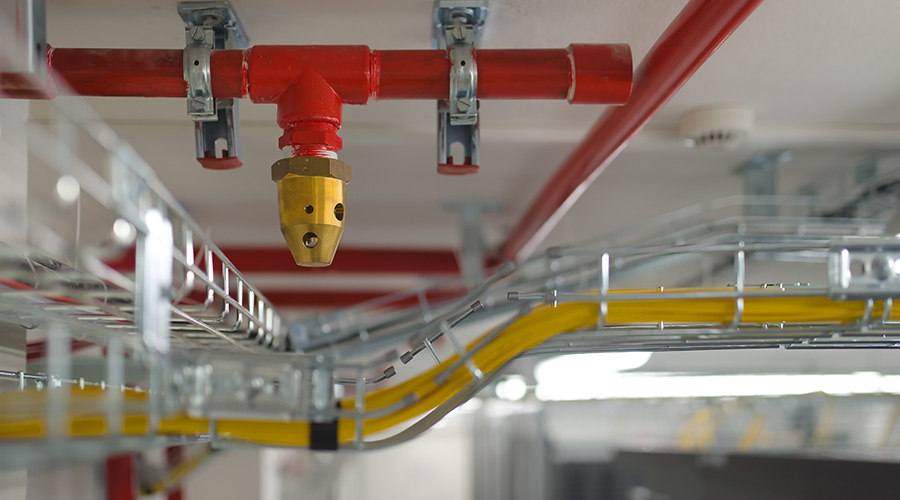How System Design Affects Fire Sprinkler Functionality
A fire sprinkler system must be designed to be sized correctly and also match the specific space in which it will function. Here are some tips.
One key to an effective fire sprinkler is its design. It needs to be appropriately sized for the building it’s protecting and the hazards it’s protecting against. An expert in fire sprinkler system design often can help determine the right size of the system. However, the building owner ultimately is responsible for ensuring the system is appropriate for the facility.
The right design varies by building type. A high storage area filled with tires may require an early suppression, fast response system, says Jeffrey Edwards, chief, plumbing and fire protection, Mueller Associates, consulting engineers. Because of the tires’ combustibility, “you want more water thrown off, and a quicker reaction,” than typically would be the case in an office.
A building that contains plastic commodities presents a higher risk than one without. The reason? The heat release rate of burning plastic is much higher than ordinary combustibles such as paper or wood, and will be more difficult to control, Dellasanta says.
It’s also critical to consider the age of the sprinkler system, Dellasanta says. Some older systems weren’t designed to accommodate the abundance of plastic that’s present in many buildings today. That could present challenges if a fire occurs. An evaluation of the system can help determine if it will provide adequate protection for the intended use of the building.
Many sprinkler systems constructed until about 1980 were based on pipe schedule designs. If the original design documents can’t be found, the building owner or facility manager can engage someone knowledgeable about sprinkler system design to determine what the system was designed for, Dellasanta says. This information should let him or her know, for instance, if the system was designed to protect a light hazard occupancy such as an office building, an ordinary hazard occupancy like a retail shop, or an extra hazard occupancy such as a manufacturing process that uses flammable or combustible liquids, he adds.
Just as important is accounting for any changes in the use of the space, says Chad Duffy, principal engineer with the NFPA. For instance, if an office space shifts to a storage unit with a greater combustible load, the existing sprinkler system may no longer suffice. “The change also changes the fire dynamics,” he says.
Related Topics:















